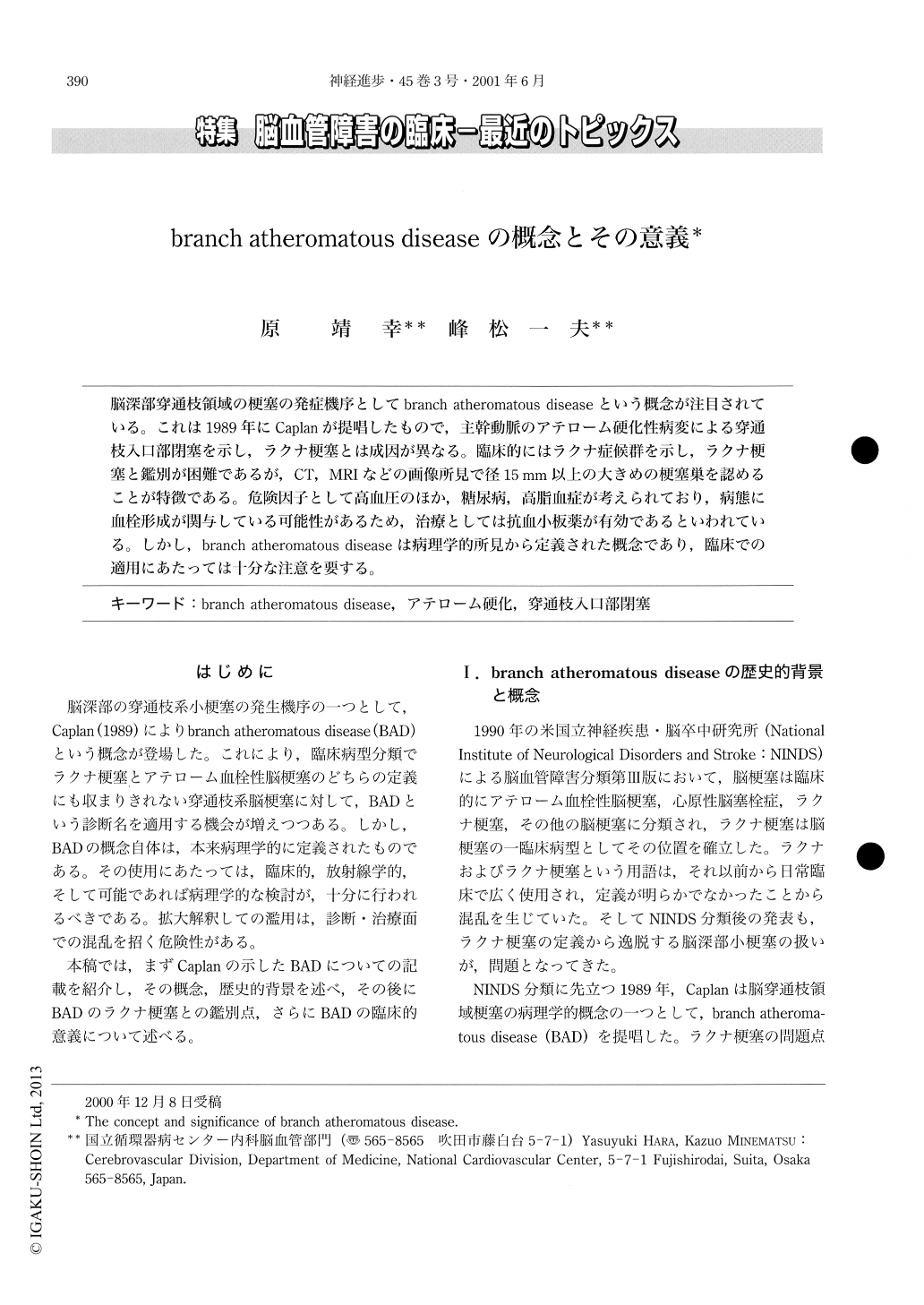Japanese
English
- 有料閲覧
- Abstract 文献概要
- 1ページ目 Look Inside
脳深部穿通枝領域の梗塞の発症機序としてbranch atheromatous diseaseという概念が注日されている。これは1989年にCaplanが提唱したもので,主幹動脈のアテローム硬化性病変による穿通枝入口部閉塞を示し,ラクナ梗塞とは成因が異なる。臨床的にはラクナ症候群を示し,ラクナ梗塞と鑑別が困難であるが,CT, MRIなどの画像所見で径15mm以上の大きめの梗塞巣を認めることが特徴である。危険因子として高血圧のほか,糖尿病,高脂血症が考えられており,病態に血栓形成が関与している可能性があるため,治療としては抗血小板薬が有効であるといわれている。しかし,branch atheromatous diseaseは病理学的所見から定義された概念であり,臨床での適用にあたっては十分な注意を要する。
Lacunar infarction remains a controversial entity. There are many deep small infarcts that cannot be explained by the concept of lacunar infarction. Caplan remarked the disparities of the causes of small deep infarct in 1989, and introduced the term 'branch atheromatous disease (BAD)' , referring to the infarct caused by narrowing or occlusion at the orifice of the perforating branch due to atherosclerosis of the parent artery. But BAD still has not investigated thoroughly clinicopathologically, and it remains the unestablished concept.

Copyright © 2001, Igaku-Shoin Ltd. All rights reserved.


